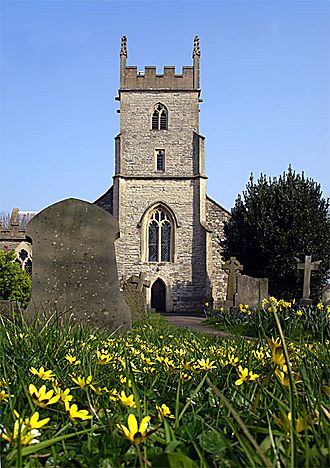Church of the Holy Trinity with St Edmund facts for kids
Quick facts for kids Church of the Holy Trinity with St Edmund |
|
|---|---|
 |
|
| General information | |
| Town or city | Bristol |
| Country | England |
| Coordinates | 51°29′13″N 2°35′15″W / 51.4869°N 2.5876°W |
The Anglican Church of the Holy Trinity with St Edmund is a historic church located on Wellington Hill in Horfield, Bristol, England. It is recognized as a grade II* listed building, which means it is a very important historical site that needs to be protected.
History and Design

The oldest part of the church is its west tower, which was built way back in the 15th century. This tower holds five bells, and four of them were made by the famous Bilbie family in 1773.
Over the years, the church has been expanded and updated. The main part of the church, called the nave, and the side sections, known as aisles, were designed by William Butterfield in 1847. Later, in 1893, the chancel (the area around the altar) and the central tower were added. Even more sections, called transepts, were built in 1913 and 1929. The church also has a large organ, which was installed in 1885.
John Frost's Grave
The churchyard is the final resting place of John Frost, an important historical figure. John Frost was a leader of the Chartist movement in the 1800s. Chartism was a working-class movement in Britain that fought for political rights for ordinary people.
Frost passed away in 1877, and his grave was in the churchyard. For many years, the exact spot of his grave was lost. However, in the 1980s, a new headstone was created and placed on his grave. This was done with help from the Newport City Council. The new headstone was officially revealed by Neil Kinnock, a well-known politician.
War Graves
The churchyard also serves as a memorial for soldiers who died in major wars. There are war graves for 17 British and two Canadian service members from World War I. Additionally, there is a grave for a Royal Navy sailor who died during World War II. These graves remind us of the sacrifices made during these global conflicts.
See also
- Churches in Bristol
- Grade II* listed buildings in Bristol

